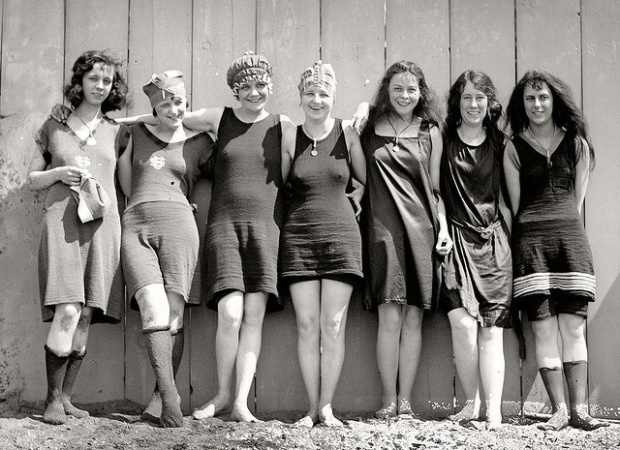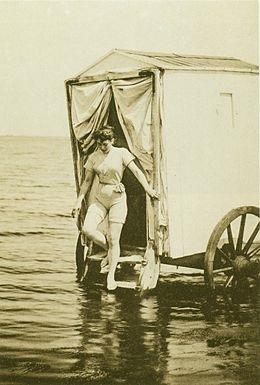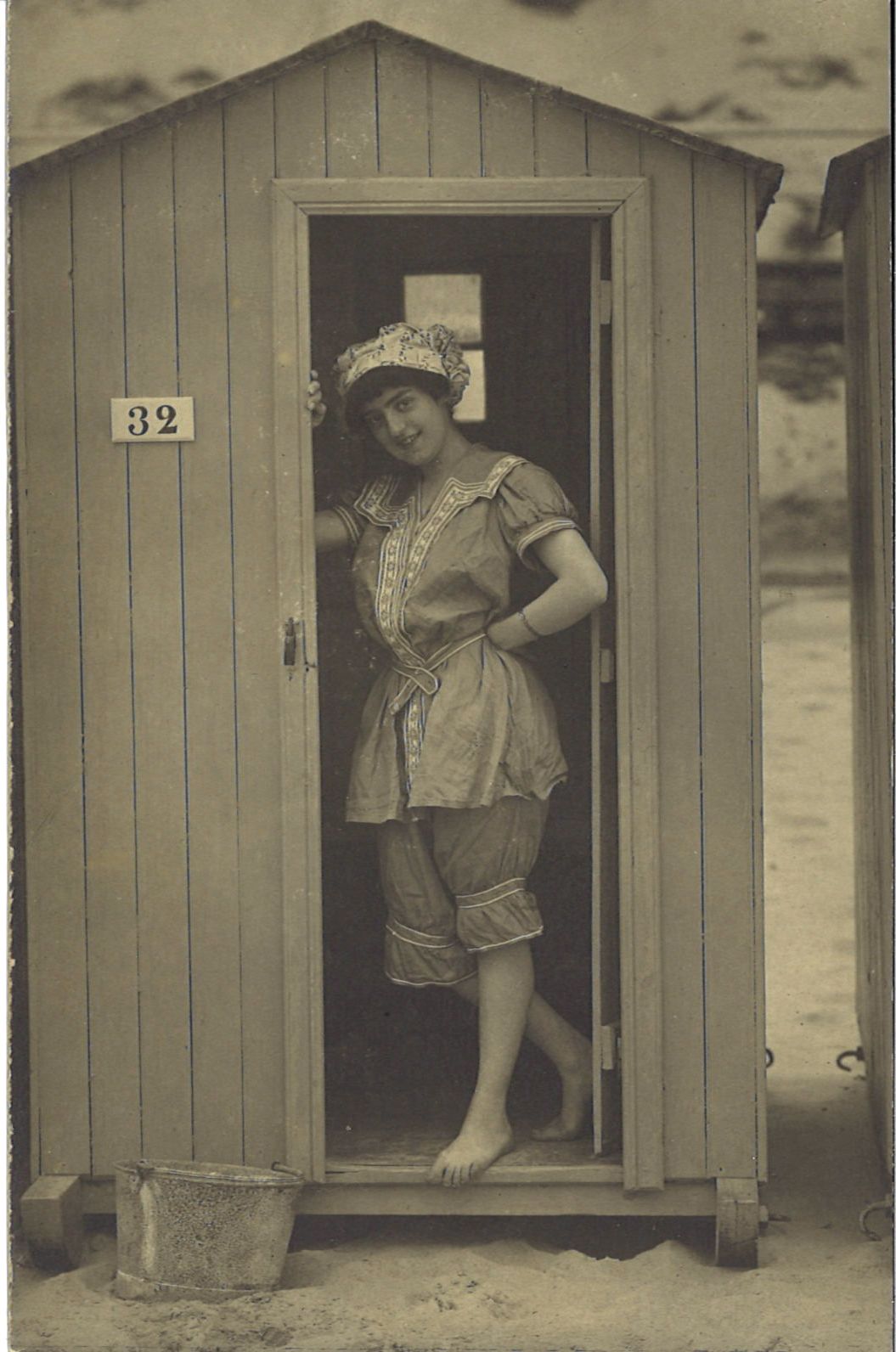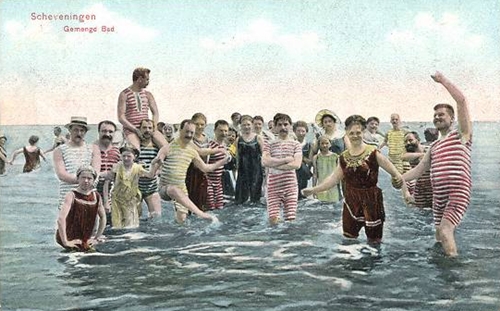As soon as the sun comes out, the vast majority of us get the jitters to go out, lay down in the sun to rest or relax or grab a terrace. As the temperature rises, we long for a day at the beach. Close to the water is the most enjoyable way to spend a warm day outdoors – sunbathing on the beach and a cooling bath in the sea. From the mid-19th century, nude swimming and nude sunbathing had blown over from England. Women who did that were a popular theme in painting at the time. In the Netherlands we know these bathers as naturists, in England it is called Skinny dipping. Due to the Victorian mores and religious influences, body-covering swimsuits were required on public beaches from the early 20th century.
At the turn of the century, after the English example, our Dutch bathing culture developed in fishing villages along the coast. Bathing coaches appeared, allowing the female bathing guest to ride in the waves and bathed in fluttering tarp, which served as protection against cheeky looks. Afterwards they changed into an awning of the carriage. Beach chairs were placed for the beach visitors who were still dressed from head to toe. Cheerful scenes of beach walkers, swimmers, sunbathers and children in summer suits, working with scoops, sand and water, were captured by artists in villages such as Scheveningen, Katwijk, Noordwijk and Zandvoort. Then the donkeys came, on which the young ladies and gentlemen, accompanied by a donkey driver, could ride along the beach.
At this time, tanned skin was still associated with outdoor work. Pale skin was a sign of privilege, indicating that people were wealthy or powerful enough not to have to work the land themselves. Tanned skin took on a different status around the 1920s as upper-middle-class women began to engage in outdoor recreation more and sports became a socially accepted activity for women. After a cruise on the Mediterranean in 1923, French fashion designer Coco Chanel, darkened, proclaimed that sunbathing was hip. They also discovered the importance of vitamin D for health and the positive effect of the sun on certain skin conditions. From that time on, tanned skin became a status symbol for white ladies. That you had a tan indicated that you had style, money and free time to travel to far, sunny places. With the rise of mass tourism in the 50s, 60s and 70s, sun-drenched destinations became extremely popular and anti-sunscreens came into circulation. In the following decades, research was conducted into excessive exposure to UV radiation. A deep dark complexion was seen as a sign of health and glamor until the early 1980s, but from the mid-1980s onwards the awareness of the danger grew.

Bathing fashion 1920s

Strandkar 1893

Schevenings beach house

Scheveningen, mixed bathing
From 1870, real swimwear started. Bathing suits, which had to cover the body as chastely as possible, consisted of a one-piece, red and white striped or plain dark bathing suit, with knee-length legs and short sleeves, for men. Women entered the water with much more clothing. The shape of their bathing suit was borrowed from the “Bloomer suit”, over-the-knee puffer trousers with a roomy tunic shirt or a top with a knee-length skirt over it. For girls a white dress, including a shirt and pants with long legs, for boys sailor suits with long or short pants and long stockings. Later, when the sailor look – blown over from England – was hugely popular, girls’ swimwear was replaced with a knee-length pleated sailor skirt or dress. Recreational sunbathing in swimwear gradually became established in the West and the images of tanned celebrities in newspapers, films and television contributed a lot to this. Dress standards relaxed and the two-piece swimsuit made its appearance. Under the influence of movie stars, and thanks to a changing morale, the bikini was widely accepted in the 1960s and topless around 1965. But times are changing and there are now enough reasons to no longer walk around topless on the beach. The sexualization of the body – bare breasts and sex – are often linked together. The rise of social media, which puts you at risk of being photographed and shared with half the world, is contributing to the increasing prudery. Who knows, we may be dressing again soon in a bath wagon instead of bumbling behind that bath towel.